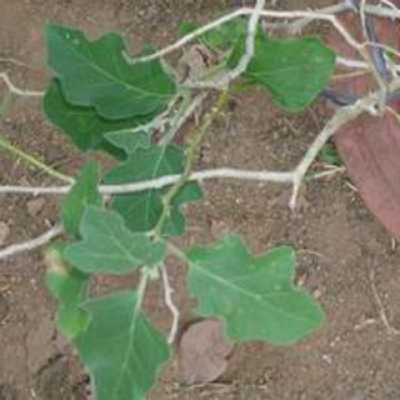Solanum melongena L. subsp. cumingii (Dunal) J. Samuel
Synonyms : Solanum incanum Linn, S. coagulena Forsk. , Solanum melongena L. var. insanum (L.) Prain
Family : Solanaceae
Group : 1. Dasamoolam
Parts Used : Root , Fruit , Leaf
Vernacular Names :-
| English | : | Medicinal brinjal |
| Malayalam | : | Cheruvazhuthina/valiya chunda |
| Hindi | : | Beigan |
| Sanskrit | : | Varttaki |
| Tamil | : | Kattirikkai |
Distribution and habitat: Cultivated throughout India.
Botany: An erect or suffrutescent, herbaceous prickly perennial plant. It grows 0.6-2m in height
- Leaves : Simple, alternate lobed.
- Flowers : Blue or white, five lobed, calyx with spines.
- Fruits: Ellipsoid berries.
Uses:
- Root is useful for toothache and sore throat.
- Leaves are used for bronchitis, cholera and asthma.
- Fruits are useful for curing liver complaints.
Formulations: Brihatyadi-kwath, Brihathyadi-gan, Sudarsan-churna, Dasamularishta, Devdarvadi-kwath and Swathyadi-kwath
Agro technology:
Soil and Climate : They come up very well in tropical and subtropical climate up to 2000 m altitude. They can be raised on a variety of soils good in organic matter.
Propagation: Seeds. Seeds are soaked overnight in water and sown in fine medium.
Planting: 3-4 weeks old seedlings are transplanted to main field at a spacing of 90 cm X 60cm.
Manures and fertilizers: FYM or compost at 20-25 t/ha is applied at the time of land preparation. A moderate fertilizer dose may be given to boost growth.
Pests and diseases: Shoot borers, mealy bugs, leaf webbers and miners are noted on the crop, which are controlled by spraying mild insecticides. Root knot nematode, wilting and mosaic diseases are also noted on the crop. Field sanitation, crop rotation and burning of crop residues are recommended.

